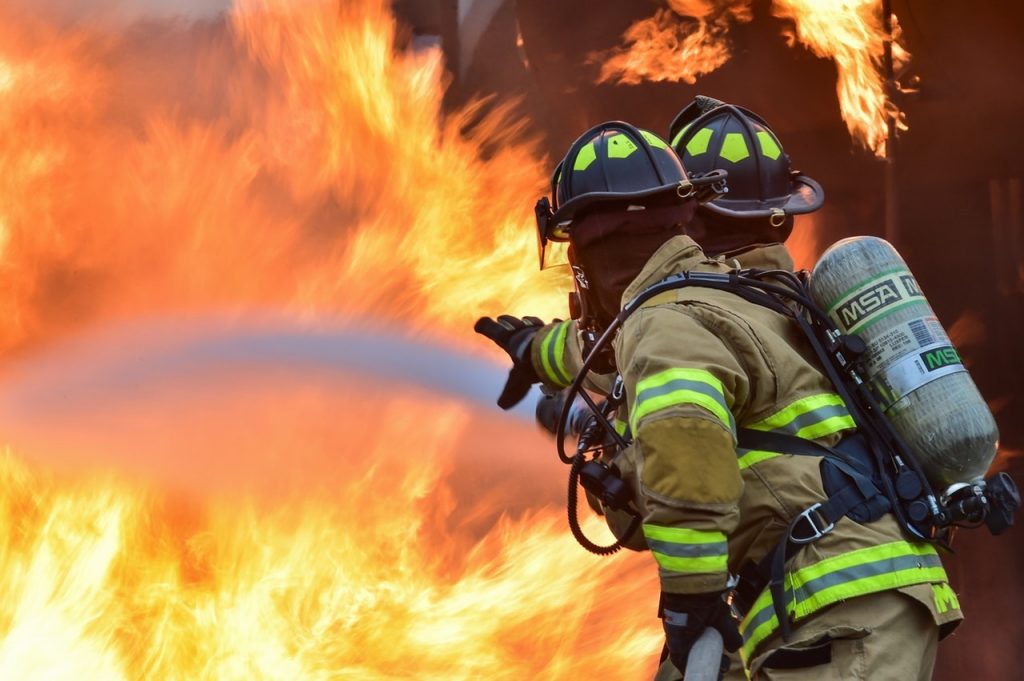By: Pat Kendall, PhD, RD, Professor and Extension Food Safety Specialist and Colorado State University Extension
Fire!
Few words can strike such terror. Whether the result of a forest fire, residential fire or fire in the kitchen only, people often try to save what they can – including food. But generally, saving food that’s been in a fire is not a good idea.

Food exposed to fire can be compromised by four factors: the heat of the fire, smoke fumes, chemicals used to fight the fire, and power outage as a result of fire.
Heat
Food in cans or jars may appear to be fine, but if they have been close to the heat of a fire, they may not be edible. Heat from a fire can activate food spoilage bacteria. If the heat is severe, the cans or jars can split or rupture, and the result is unsafe food.
Smoke Fumes
Toxic fumes, which may be released from burning materials, are one of the most dangerous elements of a fire. The fumes can be hazardous and they can also contaminate food. Any food stored in permeable packaging such as cardboard or and plastic wrap should be thrown away. Toxic fumes can permeate the packaging and contaminate the food. Discard any raw foods stored outside the refrigerator, such as potatoes or fruit, as they too could be contaminated by fumes. Even food stored in the refrigerator or freezer can become contaminated by fumes as the seals are not necessarily airtight. If food from your refrigerator or freezer has an off-flavor or odor when it is prepared it should be discarded and not eaten.
Chemicals Used to Fight Fires
Chemicals used to fight fires contain toxic materials that can contaminate food and cookware. While some of the chemicals may be listed as non-toxic to humans, they can be harmful if swallowed. These chemicals cannot be washed off the food. Foods that are exposed to chemicals should be thrown away. This includes food stored at room temperature, such as fruit and vegetables, as well as foods stored in permeable containers like cardboard and screw-topped jars and bottles. Canned goods and cookware exposed to chemicals can be decontaminated.
Wash canned goods and cookware that have been exposed to chemicals in soap and hot water. Then dip in a bleach solution (1 teaspoon bleach per quart of water) for 15 minutes, rinse and let air dry.
Power Outage
The main concern with perishables stored in the refrigerator and freezer is the availability of electrical power. If a power outage has occurred, keep the refrigerator and freezer doors closed. Open the refrigerator as little as possible. Refrigerated items should be safe as long as the power is off no more than about 4 hours. A full freezer should keep foods safe for about two days; a half-full freezer, about one-day. If foods still contain ice crystals and/or if the freezer temperature is 41º F or lower and has been at that temperature no longer than one to two days, food that was safe when it was originally frozen should still be safe. These foods can be refrozen or cooked and eaten.
Discard any perishable food that has been held at temperatures above 41º F for more than 2 hours, or any food that has an unusual odor, color or texture. Never taste food to determine its safety. If you have returned from being evacuated and are not sure if the power was shut off and then turned back on, check with your utility company. Also check for suspicious signs in your refrigerator and freezer, such as the presence of liquid or refrozen meat juices, soft or melted and refrozen ice cream, or unusual odors. Please remember that food unfit for human consumption is also unfit for pets. If in doubt, throw it out!
For additional help with food safety questions contact your local county Extension office or call the USDA Meat and Poultry Hotline (recorded messages and assistance is available in both English and Spanish) at 1-800-535-4555.
Source: Adapted from After a Fire, Is the Food Safe? Consumer Information from USDA-FSIS, December 1996 and Keeping Food Safe in an Emergency, USDA-FSIS, April 2002.


